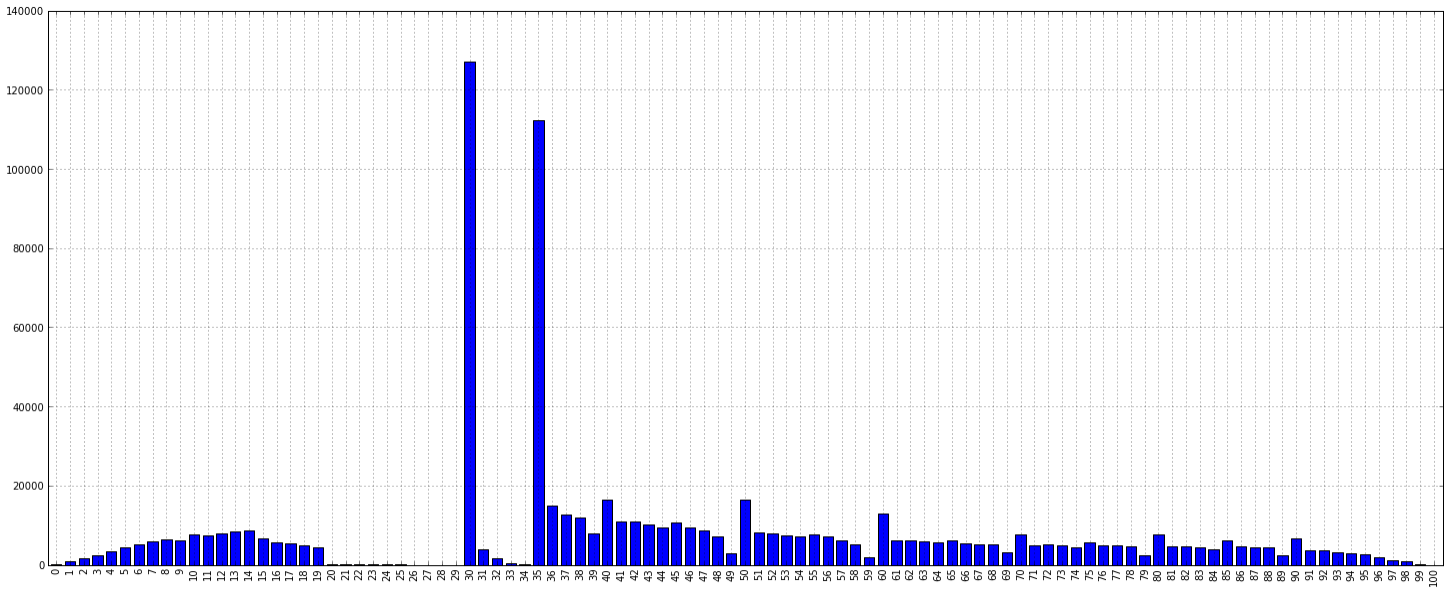Yesterday, we saw how CBSE English marks were moderated upwards and downwards. Let’s extend our data forensics into Karnataka’s state board exams in class 10 and look for patterns.
This is the distribution students marks in English as a 2nd language. The height of each bar shows the number of students who obtained a given mark.
A few obvious points stand out. Firstly, a huge number of students get exactly 30 marks. This is not surprising, as 30 is the pass mark. We also observe that very few students get between 20 – 29 marks. Presumably, they are being pushed up, or “moderated” to pass the exam.
This happened in the CBSE Class XII English exam last year too – where no student “just failed”, i.e. failed within 7 marks of the pass mark.

It seems a trifle unfortunate – these students would have passed if they had been given the same consideration that over 1.2 lakh students had been given, by bumping their marks up to the pass mark.
We are not sure how the policy of moderation is administered. However, it does have to be a little more consistent to avoid unfairness.
Note: We have chosen the Karnataka English exams at random. This is true of most subjects in many states, where moderation is implemented with varying levels of consistency.

